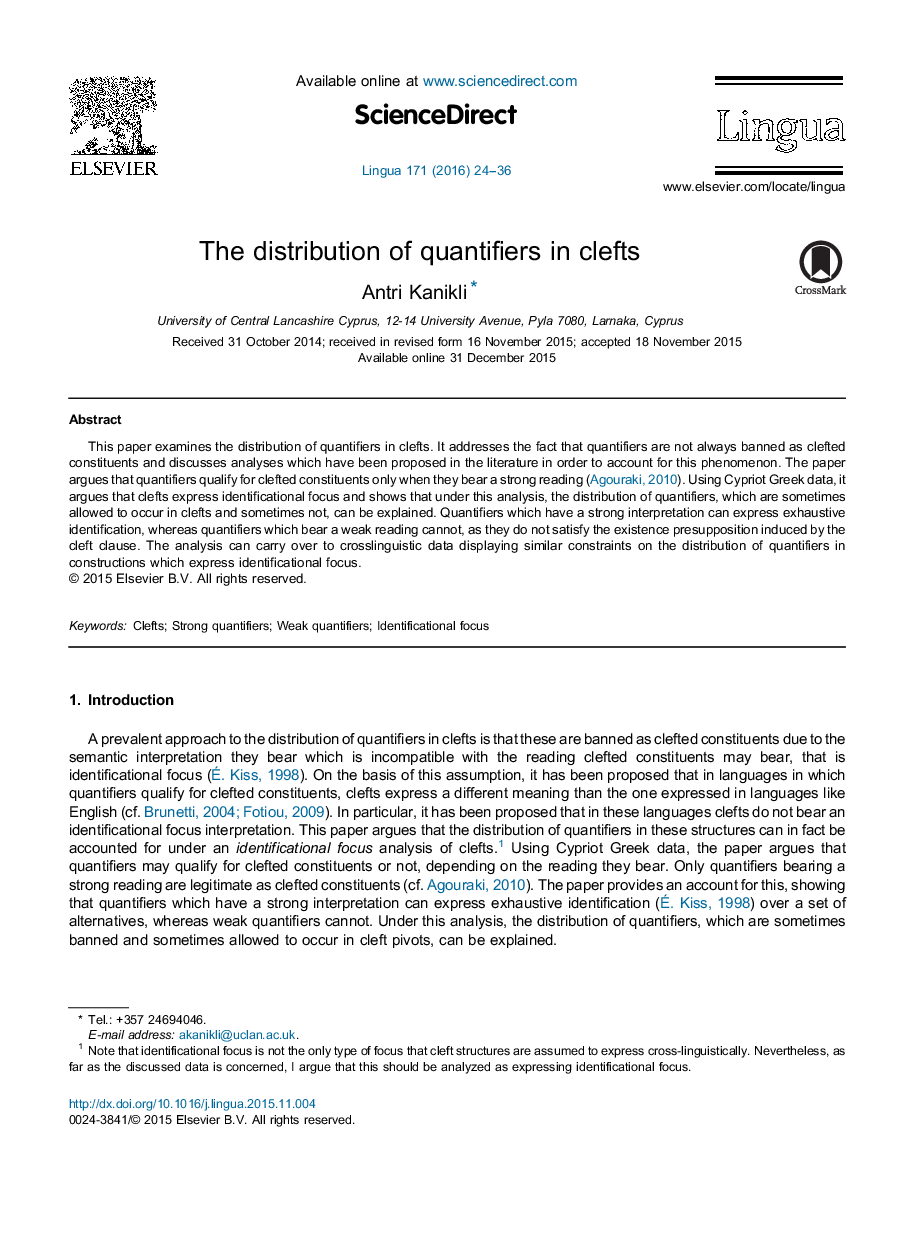| Article ID | Journal | Published Year | Pages | File Type |
|---|---|---|---|---|
| 935228 | Lingua | 2016 | 13 Pages |
•Provides an account for the distribution of quantifiers in clefts.•Quantifiers are sometimes banned as clefted constituents and sometimes not.•Clefts express identificational focus.•Strong quantifiers can express exhaustive identification, weak quantifiers cannot.•Strong quantifiers qualify for clefted constituents, weak quantifiers do not.
This paper examines the distribution of quantifiers in clefts. It addresses the fact that quantifiers are not always banned as clefted constituents and discusses analyses which have been proposed in the literature in order to account for this phenomenon. The paper argues that quantifiers qualify for clefted constituents only when they bear a strong reading (Agouraki, 2010). Using Cypriot Greek data, it argues that clefts express identificational focus and shows that under this analysis, the distribution of quantifiers, which are sometimes allowed to occur in clefts and sometimes not, can be explained. Quantifiers which have a strong interpretation can express exhaustive identification, whereas quantifiers which bear a weak reading cannot, as they do not satisfy the existence presupposition induced by the cleft clause. The analysis can carry over to crosslinguistic data displaying similar constraints on the distribution of quantifiers in constructions which express identificational focus.
